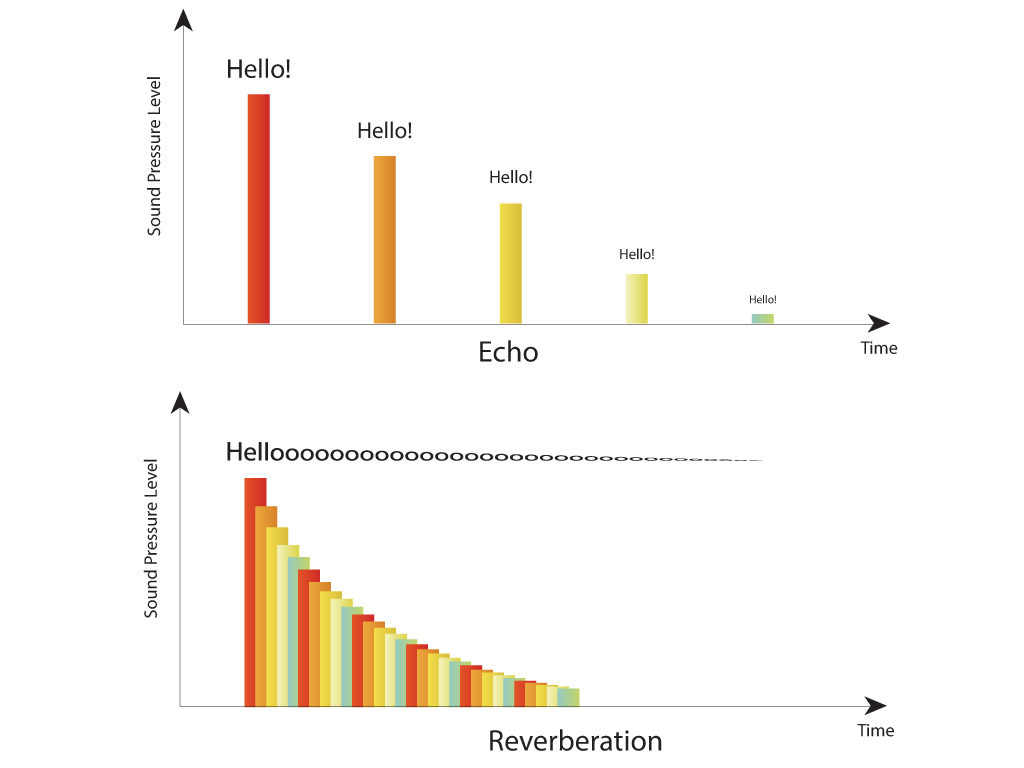Reverb creates an ambient sound, whereas delay repeats the original sound with an echo effect. Reverb gives depth and a sense of space to the sound, while delay creates a rhythmic or melodic repetition.
Both are commonly used effects in music production and can be adjusted to create a range of different sounds and moods. Understanding the differences between these two effects is essential for any producer or musician looking to add dimension and complexity to their music.
We will explore the key differences between reverb and delay and how they can be used effectively in different musical contexts. We will also discuss some tips and techniques for using these effects to enhance your music production.

Credit: mammothmemory.net
Reverb Vs. Delay
Reverb and delay are two common types of audio effects used in music production. While both can create a sense of space and depth, reverb adds an overall ambience or room tone, while delay produces distinct repetitions of the sound.
Understanding their differences can help producers achieve the desired sound.
The Basics:
Reverb and delay are two common audio effects used in music production. Reverb creates the illusion of a sound being played in a space, whereas delay creates an echo effect by repeating the sound after a certain amount of time. Both effects can add depth and character to a track but are used differently.
How Each Effect Works:
Reverb works by simulating the natural reflections of sound that occur in a physical space such as a room or concert hall. The effect is created by feeding an audio signal into a simulated room, causing the sound to bounce around the space and back to the listener’s ear. Delay, on the other hand, involves capturing a sound and playing it back after a specific amount of time. The delay time can be adjusted to create various rhythmic patterns and effects.
Differences In Sound:
Reverb tends to create a more indistinct sound, as if the sound is coming from somewhere in the background. Delay has a more pronounced effect as the sound is repeated, making it more noticeable. Reverb is used to create a sense of space and depth in a mix, while delay is more often used to create rhythmic patterns or a sense of movement.
Application In Music Production:
Both effects can be used to create a specific mood or atmosphere in a track. Reverb is commonly used in genres such as ambient, classical, and rock music. Delay is often used in genres such as dub, reggae, and electronic music.
Popular Examples Of Each Effect:
Some examples of popular reverb plugins include Valhalla Room, Lexicon PCM and Waves Abbey Road Reverb Plates. Popular delay plugins include Soundtoys EchoBoy, Waves H-Delay and FabFilter Timeless 2.
Use Cases: When To Utilize Each Effect
Reverb is a great choice for adding a sense of space and depth to a track. It can be applied to individual instruments or a whole mix to create an immersive sound. Delay can be used to create unique rhythm patterns, simulate atmospheres like caves or tunnels, and add dimension to guitar solos or vocals.
Combining Reverb And Delay:
When used together, reverb and delay can create an even more unique sound. Applying reverb before delay can create a sense of depth and space, while applying delay before reverb can create complex echo effects. It is important to experiment and find what works best for the track. Overall, both reverb and delay have important roles in music production. Understanding how they work and their differences can help in creating a balanced and dynamic mix.

Credit: www.cirrusresearch.co.uk
.jpg)
Credit: www.guitarguitar.co.uk
Frequently Asked Questions For What Is The Difference Between Reverb And Delay
Which Is Better Delay Or Reverb?
Delay and reverb are two different effects used in music production. Delay creates an echo while reverb simulates a natural room ambience. Both have their unique uses and can be used together to enhance a sound. It’s up to the individual to decide which effect suits their particular needs.
Do I Need Both Delay And Reverb?
It depends on the desired sound you want to achieve. Both delay and reverb create different effects in a mix. Delay adds space and depth, while reverb adds ambiance and room size. Use them for different purposes or try them together.
Experimentation is key to finding the right balance.
Should I Delay With Reverb Or Without?
For a natural and authentic sound, delay should be used without reverb. This gives a clear and distinct echo effect. However, if you want a more ambient and spacious sound, then delay with reverb might be better suited. Ultimately, it depends on the desired effect of the audio.
Should You Put Delay Before Reverb?
Yes, it is generally recommended to put a short delay before reverb in order to create a more natural and realistic sound. This helps to mimic the reflections that occur in physical spaces and creates a more cohesive mix overall.
Conclusion
Understanding the differences between reverb and delay is crucial for achieving the desired sound in music production. While both effects involve echoes, they differ in their timing, sound, and usage. Reverb creates a sense of space and can be used to blend sounds together, while delay creates a repetitive echo effect.
As a content writer, it’s essential to prioritize delivering simple yet informative content that is valuable to readers in the music industry. By mastering the use of reverb and delay, music producers can create unique and exceptional sounds that capture the attention of their listeners.